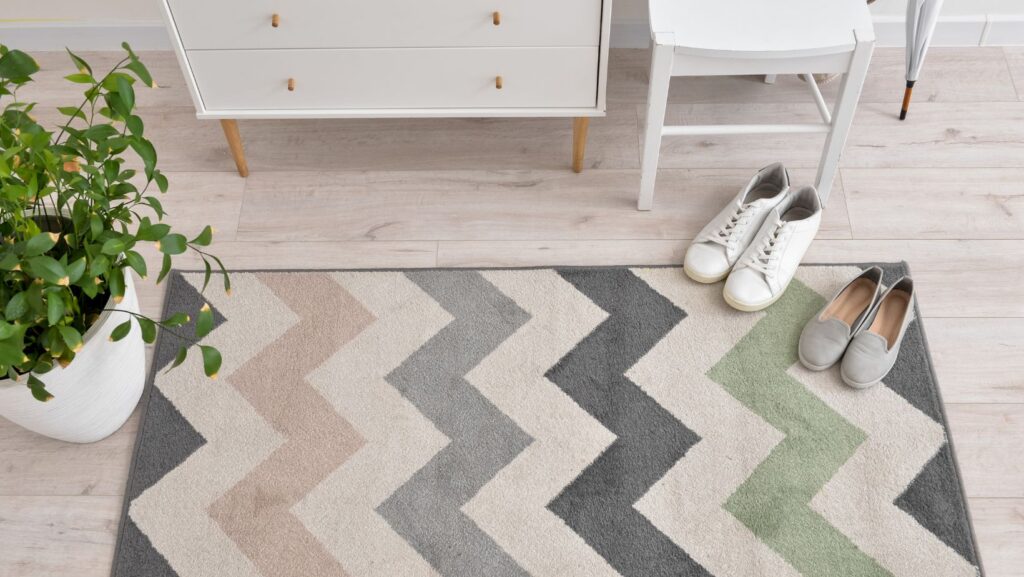Minimalist interiors can often feel stark and cold, but there is a way to bring warmth and coziness without cluttering the space. Using custom rugs is an effective method to introduce both warmth and texture to a minimalist room. By selecting tailored rugs, you can ensure they fit perfectly within your design while adding a tactile layer to your floors.
Custom rugs, especially those made from natural fibers like wool or jute, can provide much-needed comfort and visual interest. These rugs can be designed to match the exact dimensions and color palette of your space. Moreover, rugs like these can serve as statement pieces, improving the simplicity of minimalist decor with their texture and subtle patterns. Many people choose tailored rugs because they harmonize with the room’s overall aesthetic while adding a touch of personality.
In addition to their aesthetic appeal, custom rugs help in zoning different areas within an open floor plan. For instance, a well-placed rug under a seating area can define that space without adding physical barriers. This approach keeps the minimalist look intact while making the room feel more inviting and cohesive.
Incorporating Textured Rugs into Minimalist Decor
The right rug can bring comfort and warmth to a minimalist space. Details like material, color, and shape are essential for maximizing visual interest without compromising minimalist function.
Choosing the Right Material for Texture and Comfort
Selecting the right material for a rug can significantly impact both texture and comfort. Natural materials like cotton, wool, and jute add coziness and richness. Wool and cotton rugs offer softness and durability, making them ideal for high-traffic areas. Jute rugs provide a unique, rugged texture suitable for adding earthy tones.
Plush and silk rugs offer a luxurious feel but might be better suited for low-traffic spaces due to their delicate nature. Linen rugs can also be a good choice for a lighter texture.
The Role of Color and Pattern in Minimalist Rugs
Color and pattern are important in maintaining the minimalist aesthetic. Neutral colors like beige, grey, and cream can easily blend with any decor. These colors provide a calming effect while keeping the space cohesive.
Patterns should be simple and unobtrusive. Monochromatic designs fit well within minimalism, offering a sophisticated look without overwhelming the space. Adding an earthy tone can provide a subtle warmth that improves the overall coziness.
Balancing Rug Size and Shape with Furniture
The size and shape of a rug should complement the furniture arrangement. Large rugs help define open spaces and make them feel more inviting. A sofa paired with a large area rug creates a cozy sitting area, while smaller rugs can designate separate areas within the room.

Clean lines in the rug’s edges help maintain the minimalist look. Round and rectangular shapes are often the best choices for minimalist decor. Ensure the rug doesn’t stretch under all furniture pieces to keep a tidy appearance. This balance is essential for achieving both function and visual interest in a minimalist setting.
Achieving a Cozy Minimalist Interior with Rugs
Custom rugs can transform a minimalist space by adding warmth, texture, and depth. Using natural materials and strategic placement, an uncluttered room can become inviting and serene.
Layering Rugs for Added Depth and Warmth
Layering rug is an effective method to introduce depth and a cozy atmosphere into a minimalist interior. Designers often use a large base rug made from natural materials such as jute or wool. They then add smaller, textured rugs on top, like a boucle or a patterned wool rug.
This layering creates a sense of warmth and can highlight different areas of the room. For example, a living area may benefit from a large, neutral jute rug with a smaller, colorful wool rug in the center. This not only adds visual interest but also helps define the space without clutter.
Selecting Rugs for a Unified Minimalist Aesthetic
Choosing the right custom rugs is important for maintaining a unified minimalist aesthetic. It’s important to focus on rugs with simple designs and natural colors that complement other natural elements like wood, stone, or leather. Neutral shades such as beige, gray, and soft pastels work well to keep the space open and airy.

Patterns should be minimalistic too, avoiding overly intricate designs. For example, a solid-colored rug or one with a subtle geometric pattern can provide the necessary texture and warmth without being overpowering. This careful selection helps in maintaining the uncluttered and serene feel typical of minimalist interiors.
Improving Natural Light and Openness with Rug Placement
The placement of rugs can significantly impact the natural light and openness of a room. By positioning rugs in strategic locations, such as under skylights or near large windows, you can improve the feeling of open spaces. Light-colored rugs reflect natural light better, making the room feel brighter and more spacious.
Mirrors on walls opposite to the rugs can also amplify this effect. For instance, placing a light-colored rug in the center of an open living area and using mirrors to reflect the natural light helps maximize the room’s airy and uncluttered feel. Proper lighting and rug placement work hand-in-hand to create a cozy yet open minimalist space.
Conclusion
Custom rugs can effectively add warmth and texture to a minimalist interior. By introducing various materials such as wool or cotton, these rugs improve the room’s coziness. They also bring in-depth and visual interest without overwhelming the simple design.
Using layers and high-pile options, rugs can complement the clean lines of minimalist decor. The right custom rug not only serves a functional purpose but also elevates the overall ambiance of the space, making it inviting and stylish.
